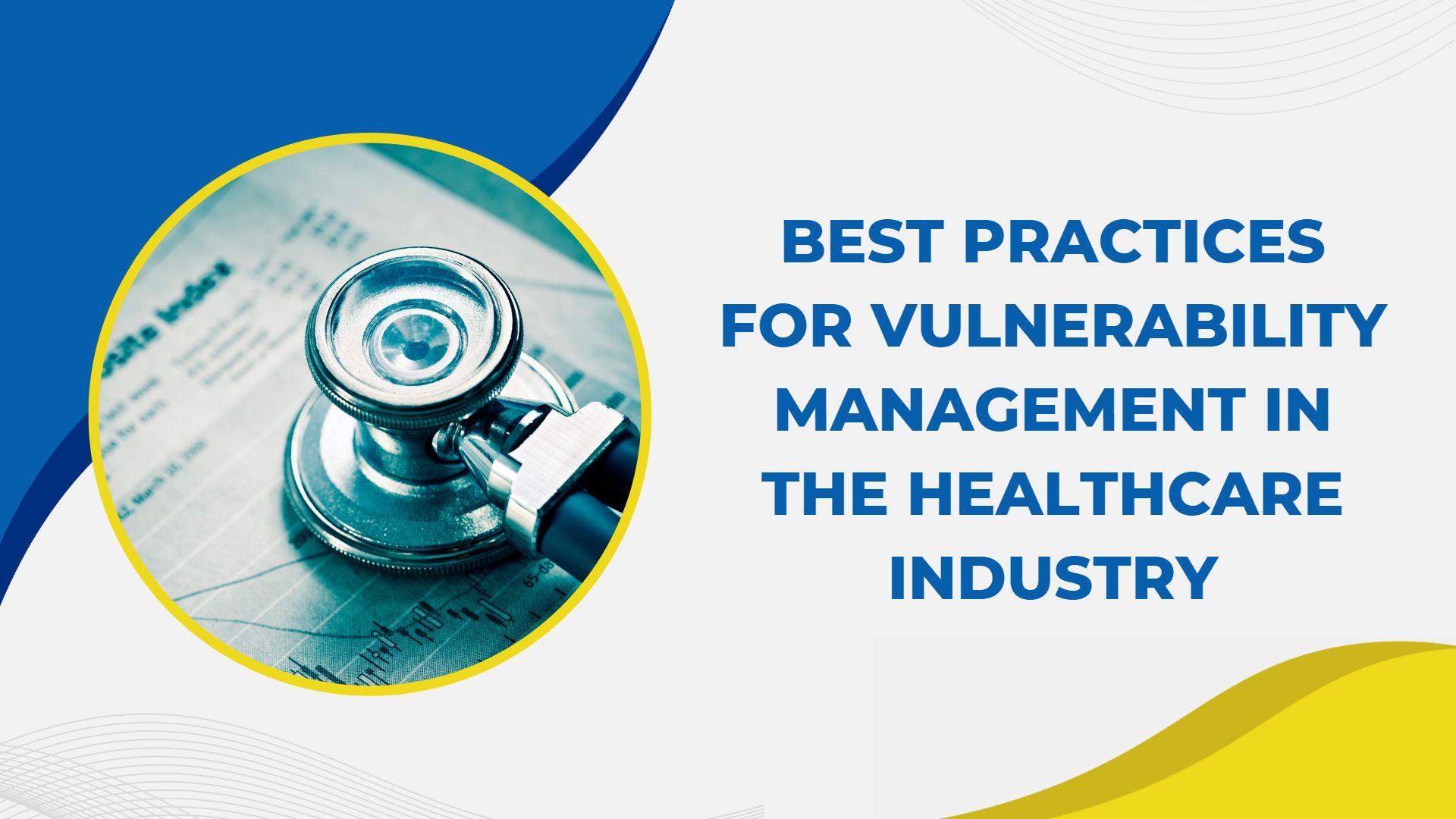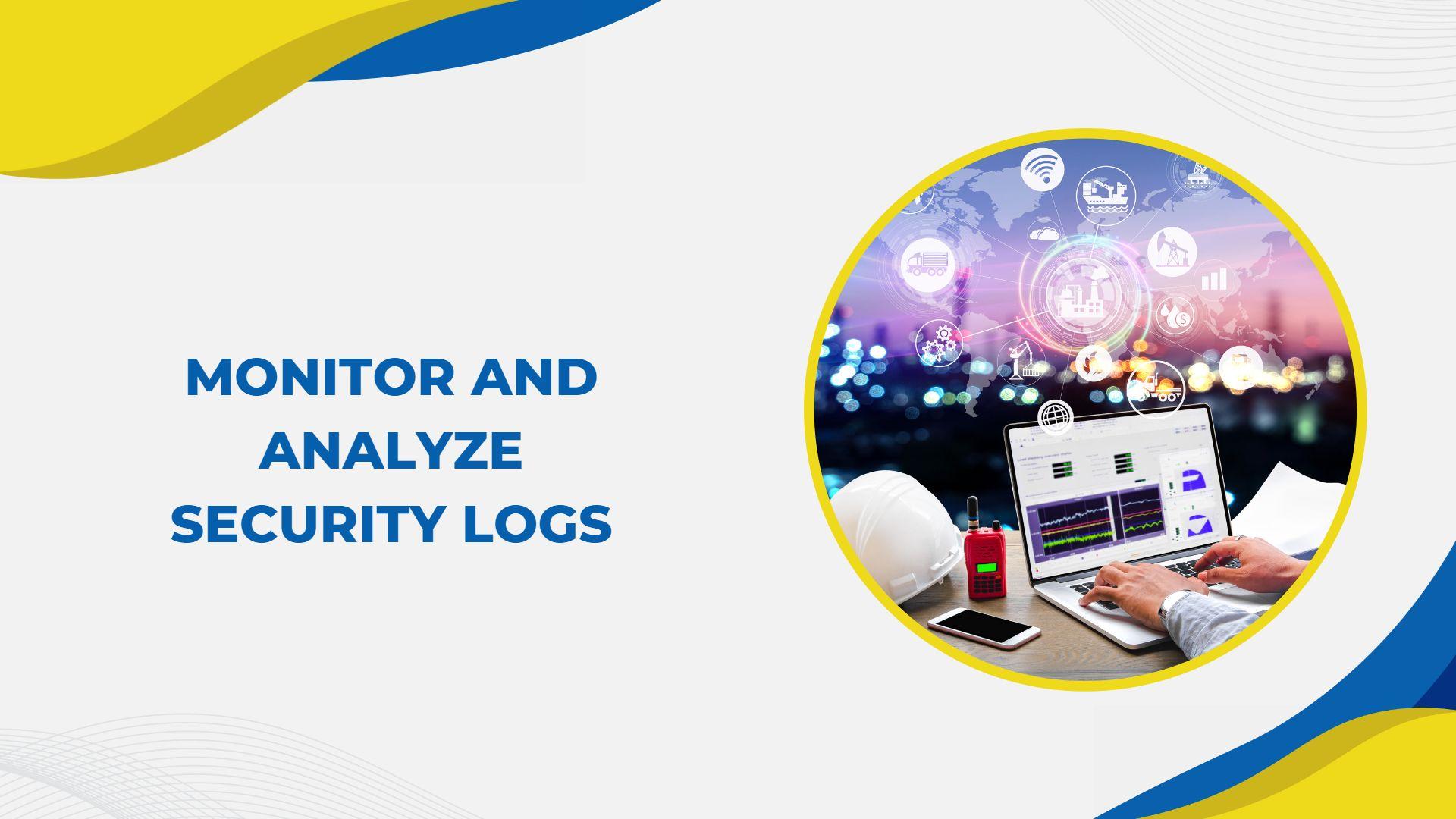
Best Practices for Vulnerability Management in the Healthcare Industry
In today’s digital age, healthcare organizations are more reliant on technology than ever before. Medical records, patient data, and other sensitive information are stored and transmitted electronically. This dependence on technology has made healthcare organizations vulnerable to cyberattacks. In fact, according to the Breach Barometer report by Protenus, there were 599 data breaches reported in the healthcare industry in 2021, with over 49 million records exposed.
To combat these threats, healthcare organizations need to implement effective vulnerability management practices. It is the process of identifying, evaluating, prioritizing, and mitigating security vulnerabilities in an organization’s IT infrastructure. This process is essential for healthcare organizations to ensure the confidentiality, integrity, and availability of sensitive data.
In this article, we’ll talk about the best ways to manage vulnerabilities in the healthcare field.
Develop a Vulnerability Management Program
The first step in effective vulnerability management is to develop a comprehensive program that outlines the policies, procedures, and tools used to manage vulnerabilities. The program should include a vulnerability assessment plan, a remediation plan, and a process for monitoring and reporting vulnerabilities.
Conduct Regular Vulnerability Assessments
Regular vulnerability assessments are critical for identifying security vulnerabilities in an organization’s IT infrastructure. These assessments should be conducted at least once a year or whenever significant changes are made to the network. Vulnerability assessments can be performed using vulnerability scanners or by hiring a third-party security firm to conduct a penetration testing.
Prioritize Vulnerabilities
Not all vulnerabilities are created equal, and healthcare organizations need to prioritize which vulnerabilities to address first. Prioritization should be based on the level of risk each vulnerability poses to the organization. A risk-based approach should be used, taking into account the likelihood and impact of a successful attack.
Develop a Remediation Plan
Once vulnerabilities have been identified and prioritized, a remediation plan should be developed. The plan should outline the steps needed to mitigate each vulnerability and the timeline for completing each step. The remediation plan should be based on the organization’s risk tolerance and budget constraints.
Implement an OT Asset Management System
Operational Technology (OT) assets, such as medical devices and equipment, are critical components of healthcare organizations. However, they are often overlooked in vulnerability management programs. Implementing an OT asset management system can help identify vulnerabilities in these devices and ensure that they are properly maintained and secured.
Implement a Patch Management Process
Software patches are often released to address security vulnerabilities in operating systems, applications, and other software. Implementing a patch management process can help ensure that these patches are applied on time, reducing the risk of a successful attack.
Provide Ongoing Security Awareness Training
Employees are often the weakest link in an organization’s security posture. Providing ongoing security awareness training can help employees recognize and avoid common security threats, such as phishing attacks and social engineering tactics.
Use Multifactor Authentication
Multifactor authentication adds an extra layer of security to user authentication, making it more difficult for attackers to gain unauthorized access to sensitive data. Healthcare organizations should consider implementing multifactor authentication for all users, especially those with access to sensitive data.
Monitor and Analyze Security Logs

Monitor and Analyze Security Logs
Monitoring and analyzing security logs can help identify suspicious activity on an organization’s network. Healthcare organizations should implement a Security Information and Event Management (SIEM) system to collect and analyze security logs from all devices on the network.
Monitoring and analyzing security logs is a must if you want to find possible security problems quickly and fix them. Security logs can tell an organization a lot about what is going on in its IT infrastructure, such as login attempts, file access, and network traffic. By collecting and analyzing this data, healthcare organizations can find oddities and signs of compromise that may indicate a security breach.
A Security Information and Event Management (SIEM) system is a useful tool for collecting and analyzing security logs. The SIEM system can automatically collect and analyze security logs from all devices on the network. It can also send alerts to security teams in real-time when possible security incidents are found. The SIEM system can also make reports about security incidents, giving valuable information for responding to incidents and analyzing them afterward. Additionally, you can use PRTG OPC UA Server to help you get an overview of your OT network and consolidate alarms and notifications from your OT and IT networks in one central view.
Engage in Regular Third-Party Audits
Regular third-party audits can provide an objective assessment of an organization’s security posture. These audits can help identify vulnerabilities that may have been missed during internal assessments and provide recommendations for improving security practices.
While cybersecurity is a critical component of vulnerability management, physical security should not be overlooked. Healthcare organizations should ensure that physical access to critical systems and devices is restricted and monitored. For example, servers and networking equipment should be kept in a secure room with access limited to authorized personnel only.
Conduct Regular Penetration Testing
In addition to regular vulnerability assessments, healthcare organizations should conduct regular penetration testing to identify weaknesses in their security posture. Penetration testing is a simulated cyber attack that attempts to exploit vulnerabilities in an organization’s network. The results of penetration testing can help identify areas for improvement in the organization’s security practices.
Implement Encryption
Encryption can help protect sensitive data from unauthorized access. Healthcare organizations should implement encryption for all sensitive data at rest and in transit. This includes data stored on servers, laptops, and mobile devices, as well as data transmitted over the network.
Ensure Third-Party Vendors Follow Best Practices
Healthcare organizations often work with third-party vendors to provide services such as cloud hosting, medical equipment maintenance, and software development. It is essential to ensure that these vendors follow best practices for vulnerability management to minimize the risk of a security breach. Healthcare organizations should include security requirements in their vendor contracts and regularly audit their vendors’ security practices.
Maintain an Incident Response Plan
Even with the best vulnerability management practices, healthcare organizations may still experience security incidents. It is essential to have an incident response plan in place to minimize the impact of a security breach. The incident response plan should include procedures for identifying and containing security incidents, as well as a process for notifying affected individuals and regulatory authorities.
Conclusion
Effective vulnerability management is a must for healthcare organizations that want to protect sensitive information and make sure that critical systems are always up and running and safe.
Healthcare organizations should create a comprehensive vulnerability management program, do regular vulnerability assessments, prioritize vulnerabilities, make a plan for fixing them, implement an OT asset management system, implement a patch management process, provide ongoing security awareness training, use multifactor authentication, monitor and analyze security logs, and have regular third-party audits.
By following these best practices, healthcare organizations can improve their security and protect themselves from cyber threats.






